This week, the new and ultra-efficient Toyota Prius Plug-in hybrid is launching to the UK’s reviewers, road testers and motoring writers.
We’ll be bringing you more for the event this week, and we’ll report back on the reviews as they come in so you can find out all about the car from the independent experts.
To coincide with the launch, we asked for your questions about the car, and we can now bring you the answers.
Read on for all you need to know about the Prius Plug-in – and don’t forget to leave us a comment below if your question hasn’t been answered yet.
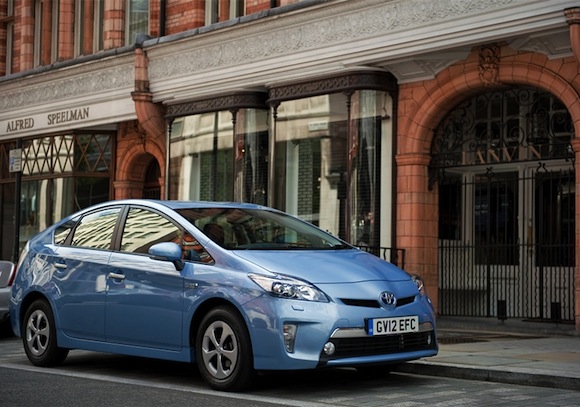
How does the Prius Plug-in work?
The Prius Plug-in is what we term a PHEV, or plug-in hybrid electric vehicle. It uses a development of Toyota’s Hybrid Synergy Drive system that combines a rechargeable lithium-ion battery with a 1.8-litre petrol engine to deliver smooth, refined and ultra-efficient driving and incredible economy.
The lithium-ion battery means it can drive approximately 15.5 miles purely on electric power, meaning low running costs and zero emissions.
What is the range of the Prius Plug-in?
The electric-only range of the Prius Plug-in is approximately 15.5 miles, enabling typical commuter journeys to be accomplished with zero tailpipe emissions. Thanks to the hybrid powertrain’s petrol engine, Prius Plug-in is equally able to accomplish long distance trips.
Once the car has reached the limit of its EV driving range, it automatically operates in full hybrid mode, with the petrol engine coming into play. This means there is none of the concern about whether the car can reach its destination without running out of power – the ‘range anxiety’ that is typically associated with full electric vehicles.
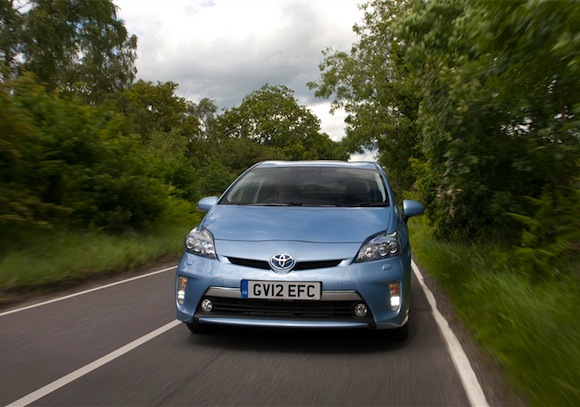 How much does the Toyota Prius Plug-in cost?
How much does the Toyota Prius Plug-in cost?
Prices for the Toyota Prius Plug-in start at £32,895 on the road, but this falls to £27,895 with the benefit of the £5,000 Government grant available on new plug-in vehicle purchases, provided through the Office for Low Emission Vehicles (OLEV).
What is the CO2 emissions figure of the Prius Plug-in?
The Prius Plug-in achieves a new low benchmark in its class with official CO2 emissions of 49g/km, way below the 100g/km threshold for UK road tax (VED).
What are the fuel consumption figures of the Prius Plug-in?
Official combined mpg figures are 78.5mpg in HV (hybrid vehicle) mode. When you drive solely in EV (electric vehicle) mode, the Prius Plug-in uses no fuel. However, official figures been calculated for EV mode using a standard testing cycle which takes the average from one run with a fully charged battery and a second run with a depleted battery.
Do I need to charge the Prius Plug-in?
Not necessarily. If the Prius Plug-in’s battery is not charged, it simply performs as a ‘standard’ Toyota hybrid vehicle, using the engine and/or the electric motor depending on the driving conditions and battery state of charge.
However, charging the battery does ensure the highest levels of efficiency and zero-emissions driving, particularly in stop-start or low-speed conditions, so we recommend regular charging.
What happens when the EV battery on Prius Plug-in runs out of charge?
The car automaticlaly switches to HV (hybrid vehicle) mode and runs as a standard Toyota Hybrid, just like the normal Prius.
[youtube width=”580″ height=”400″]https://www.youtube.com/watch?v=hVe_-bps7hw[/youtube]What do I need to charge the Toyota Prius Plug-in?
The Prius Plug-in comes with a dedicated charging cable, which fits under the boot floor. This plugs into a standard domestic socket, but we recommend an isolated charge point is installed to protect against overloading your home’s system. Toyota’s recommended supplier of electric car charging points in British Gas, who will provide a free site survey to our customers. British Gas says it can supply a charging point for as little as £375 – find out more on the Toyota website. Buyers are not obliged to use British Gas.
How long does it take to fully recharge the Prius Plug-in?
Around 1.5 hours using a standard 240V electrical supply.
How long is the EV battery warranty?
The EV battery has a warranty of eight years. The Prius Plug-in benefits from the standard five-year Toyota Warranty.
What is the battery life of the Prius Plug-in?
The lithium-ion battery is designed to last the life of the vehicle.
How much heavier is the battery pack from the regular Prius?
The Lithium-ion battery in the Prius Plug-in weighs 80kg, the Nickel-Metal Hydride battery of the Prius weighs 42kg.
Does the EV battery take away space from the passenger compartment or luggage capacity?
Luggage capacity above the floor is only 2 litres smaller in the Prius Plug-in than in Prius, at 443 litres (compared with 446 litres for Prius). Below the floor, space is smaller – 40.5 litres vs. 48 litres. Total load volume increases to 1,120 litres when the rear seats are folded.
These figures were measured by the VDA method.
What is the fuel tank capacity of the Prius Plug-in?
45 litres.
 What is the 0-62mph time of the Toyota Prius Plug-in?
What is the 0-62mph time of the Toyota Prius Plug-in?
The 0-62mph time is 11.4 seconds. Top speed is 112mph.
How does the Prius Plug-in compare with the Prius in terms of performance?
The top speeds of the two cars are the same, at 112mph. The Prius has a 0-62mph time of 10.4 seconds, one second quicker than the Prius Plug-in.
Does the Prius Plug-in have a spare wheel?
The Prius Plug-in comes with a tyre repair kit to save weight.
Is DAB digital radio available on the Prius Plug-in?
DAB digital radio is available as a dealer-fit option.
Does the Prius Plug-in have Adaptive Cruise Control?
The Prius Plug-in has cruise control as standard. Adaptive Cruise Control is not available.
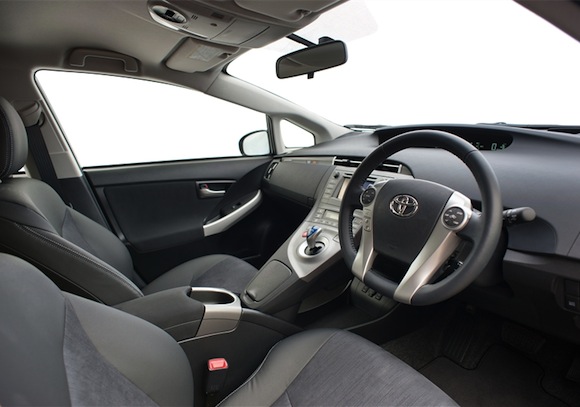 Can I pre-heat the interior of the Prius Plug-in before using it?
Can I pre-heat the interior of the Prius Plug-in before using it?
Pre-heating is not available on Prius Plug-in. This is because the car’s air conditioning is coordinated with the standard front seat heaters. This enables the system to reach a comfortable temperature for the driver and passenger more quickly and effectively, further improving efficiency.
When does the Prius Plug-in go on sale?
The Toyota Prius Plug-in is arriving in UK showrooms now (July 2012).
How can I book a test drive?
You can book a test drive in the Toyota Prius Plug-in on the Toyota UK website.
How can I read a brochure for the Toyota Prius Plug-in?
You can read the online eBrochure or order a paper brochure on the Toyota website, or find out more about the car here.

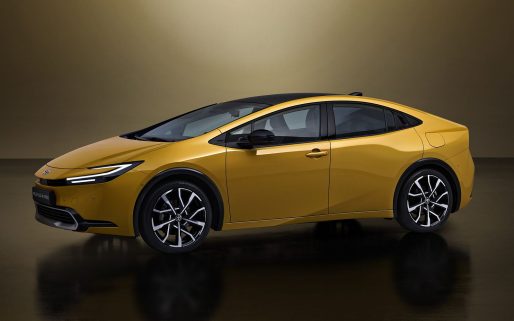
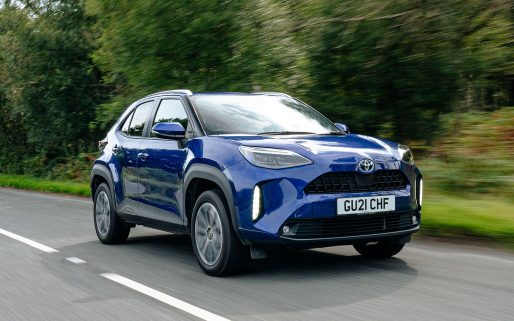

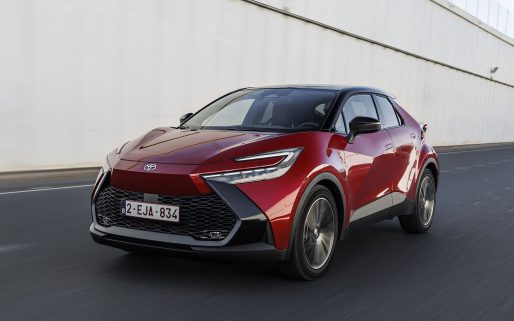
We received very good advice from our Dealer, Bentleys of Warrington that does not seem to be written down anywhere. That is, if you know you are going to do some distance in City mode it is better to drive in Brake drive as this helps the regeneration significantly. We are averaging over 200mpg on our first 50 miles since getting the car this week!! Not used any petrol at all.
Anne Simpson
Since this advice is directly contradictory to every piece of information that I have ever been given about the “B” function ( i.e. that it uses engine pumping to throw away energy rather than store it) can someone from Toyota please confirm, or otherwise, that this new advice for the PiP is correct.
Hi Chris
Thanks for your post.
You are correct in your assessment. B mode is equivalent to engine braking mode and can be used in terms of control when going down steep hills for example. It will not be powering the vehicle in the most efficient way possible as this can only be undertaken in Drive mode. Difficult to comment on the previous post in terms of timeframe and no indication given in terms of use (short urban journeys for example) but hope this has helped clarify for you.
Thanks. That’s very helpful. But it does also indicate that there is some kind of misunderstanding, either by your dealer in Warrington or between the dealer and the customer. I have heard this misinformation about driving in “B” for improved regeneration from several directions and always in the end, denied emphatically.
I have a plug in. Whenever I fully recharge it it gives a different value for the potential EV distance and this is no where near the 15.5 miles given in the brochure. So far its varied between about 12.5 and 10.2 miles. I appreciate that in practice the distance will vary but why don’t I get the possible distance being displayed as being near the max immediately after a recharge?
Hi Peter,
Thanks for your post. The 15.5 mile EV range is an optimum figure and is dependent on driving style. The car monitors driving style in-between charges and once fully-charged, will then give you its predicted, realistic EV range. The ‘up to 15.5 miles’ figure is attainable by using eco-driving techniques. For more information on this, please see a recent blog post: http://ow.ly/cADbZ.
We hope this helps, many thanks.
Hi Peter, I had the same query at first, I have been using my plug in since 6Aug. It is averaging a figure of approx11.5 when showing fully charged. However when the City mode is exhausted it switches into Ev mode and as long as there is a good charge in the Ev battery you will get nrearer to 15. Another big tip is when you are in urban driving in city mode make sure you are in ” Brake” in the drive as this is more effective at charging the battery, you will see the difference.
Anne
Anne
Thanks for the advice re using B I will try it however the Owner’s manual does seem to discourage this as it says using B will make “fuel efficiency low” see page 290
Hi Peter, yes that would be correct in normal hybrid Eco drive but at low speeds and stopping and slowing down around town in City battery only drive it defo makes a difference. My dealer Bentleys of Warrington recommended this otherwise I would never had known. Hope this helps.
Anne
I thought I didn’t need to switch to City mode, the EV mode stays in electric fine around town, again I’m getting around 12.5 miles on a full charge, would I get more if I did use the City mode? Three years in a Gen III Prius before this so quite good at eco driving.
How is the 12v battery recharged? Is it like the standard Prius and only charged once the car has been started (when it takes its charge from the EV battery?)or is it also recharged when recharging the EV battery? If the former what precautions should be taken when leaving the car unused for awhile, say 4-6 weeks?
Hi Peter, we actually had this occurrence on our series 3 Prius when is was 2.5 years old during last winter. We had 4 weeks away when it was very cold over xmas and the battery was flat when we came back. We got Toyota assist to sort it, they tested it and thought one of the cells was a bit down but the dealer tested it ok when we drove it to them. We asked the same question when we collected our Plugin as we will be away again this year and they thought it unlikely to happen but still possible.Apparently, all the sensors around the vehicle are supposed to be put into sleep mode by the computer when it detects the vehicle has not moved for a while, so if that does not happen the battery could easily go flat. We will just phone Toyota assist if it happens again.
Anne & John
Hi Peter,
Thanks for your question. The Prius Plug-in is, as you say, like the standard Prius in terms of how it recharges the 12v battery. The HV battery, or EV as it can be referenced, is 207.2v and this is converted to 12v through the Inverter/Converter, which is then used to charge the 12v battery. This process happens when the Hybrid system is on. If any car is left unused for a long period of time there is always potential for the 12v battery to become flat. If you would like to speak to someone for advice about avoiding getting a flat battery, we recommend you speak directly with your Local Dealer: http://ow.ly/dneCX.
We hope this helps.
Battery Life – Toyota states that the warranty on the battery is 8 years and the battery is expected to last the life of the car. I assume the car is expected to last somewhat longer than 8 years, so the battery will require replacement. At what age does Toyota expect battery renewal and what is the current cost of purchasing and replacing battery?
Hi John,
The car’s battery is expected to last the lifetime of the vehicle. If there are ever any issues with the battery in the car we advise you speak directly with your Dealer. They will be best placed to assess the work that may need to be done and can also give you the price for parts.
Many thanks and kind regards.
We pass vehicles down the family, currently we have 16 year old vehicle in fleet, your telling us that the battery will be perfectly fine to this age or that the prius shhould be scrapped at 8 years ??
John,
Depending on your driving style, the battery of the car should last the lifetime of the vehicle. The warranty simply covers you for 8 years, or 100,000 miles. If you look after your car, such as having it services regularly, there is no reason it won’t last to be handed down the family many years to come.
Many thanks.